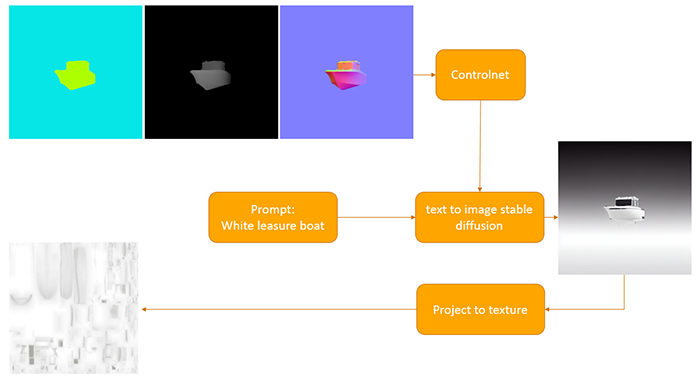 |
| Ground truth labels and detection results in an infrared image. From Kjønås (2021). |
Background
Stable diffusion is a deep generative artificial neural network that can be used to generate images from text input. It can also be used generate textures for 3-dimensional models. In contrast to previous text-to-image models it is open source and can be run on consumer-grade computers.
Scope
The goal of this project is to simulate infrared textures for the digital twin Autoferry Gemini, which is used for simulations of the autonomous ferries milliAmpere 1 and milliAmpere 2.
Proposed tasks for the specialization project
- Make yourself familiar with latent diffusion models in general and Stable Diffusion in particular.
- Consolidate suitable infrared training data for experimenting with Stable Diffusion in the context of Autoferry Gemini.
- Train Stable Diffusion on collected data, and generate high-fidelity simulations.
- Analyze the output in quantitative and qualitative terms.
Proposed tasks for the MSc thesis
The MSc thesis will build on the specialization project, and pursue a topic such as one of the following in greater depth:
- Can simulated infrared textures be used to train infrared detectors?
- Can simulated infrared textures be used to test infrared detectors?
 |
| Workflow of Stable Diffusion used to generate optical textures on boats. |
Prerequisites
This is a list of recommended prerequisites for this master project.
- Strong programming skills in Python and/or C++.
- You should have had courses in machine learning and/or computer vision.
Contact
For more information, contact main supervisor Edmund F. Brekke.
Relevant literature
- K. Vasstein, E. Brekke, R. Mester and E. Eide (2020): “Autoferry Gemini: a real-time simulation platform for electromagnetic radiation sensors on autonomous ships”, ICCV 2023.
- I. Kjønås (2021): “Maritime Object Detection in LWIR- images using Deep Learning methods with Data Augmentation”, Master thesis, NTNU.